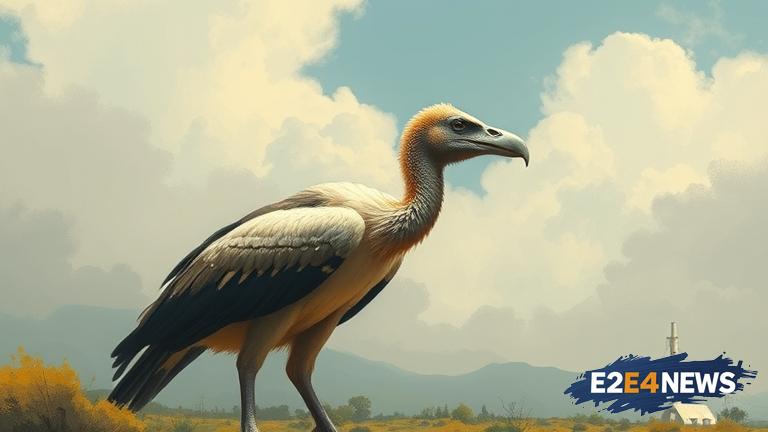In a groundbreaking collaboration, a filmmaker has teamed up with a biotech company to revive the extinct giant bird, the Moa. The Moa, which was native to New Zealand, was the largest bird species to have ever existed, with some species reaching heights of over 3 meters. The bird was hunted to extinction by early human settlers, with the last confirmed sighting recorded in the 15th century. The biotech company, which specializes in genetic engineering and cloning, aims to bring back the Moa through a process of DNA sequencing and gene editing. The filmmaker, who has a background in documentary filmmaking, will be documenting the entire process, from the initial stages of DNA extraction to the potential birth of a cloned Moa. The project has sparked both excitement and controversy, with some experts hailing it as a major breakthrough in the field of biotechnology, while others have raised concerns about the ethics of bringing back an extinct species. The biotech company has assured that the project will be conducted with the utmost care and respect for the species, and that the goal is not to create a theme park attraction, but to learn more about the biology and behavior of the Moa. The project is still in its early stages, but the team is hopeful that they will be able to make significant progress in the coming years. The Moa was a unique and fascinating species, with a number of distinct characteristics, including its massive size, powerful legs, and distinctive feathers. The bird played a crucial role in the ecosystem of New Zealand, and its loss had a significant impact on the environment. By bringing back the Moa, the team hopes to not only learn more about the species, but also to restore balance to the ecosystem. The project has also sparked interest in the field of conservation, with many experts seeing it as a potential solution to the problem of extinction. However, others have raised concerns about the potential risks and unintended consequences of bringing back an extinct species. The team is aware of these concerns and is taking a cautious and careful approach to the project. The filmmaker’s documentary will provide a unique insight into the process, and will follow the team as they work to bring back the Moa. The project is a complex and challenging one, but the team is driven by a passion for discovery and a desire to learn more about the natural world. As the project progresses, it is likely to spark further debate and discussion about the ethics and implications of bringing back an extinct species.
